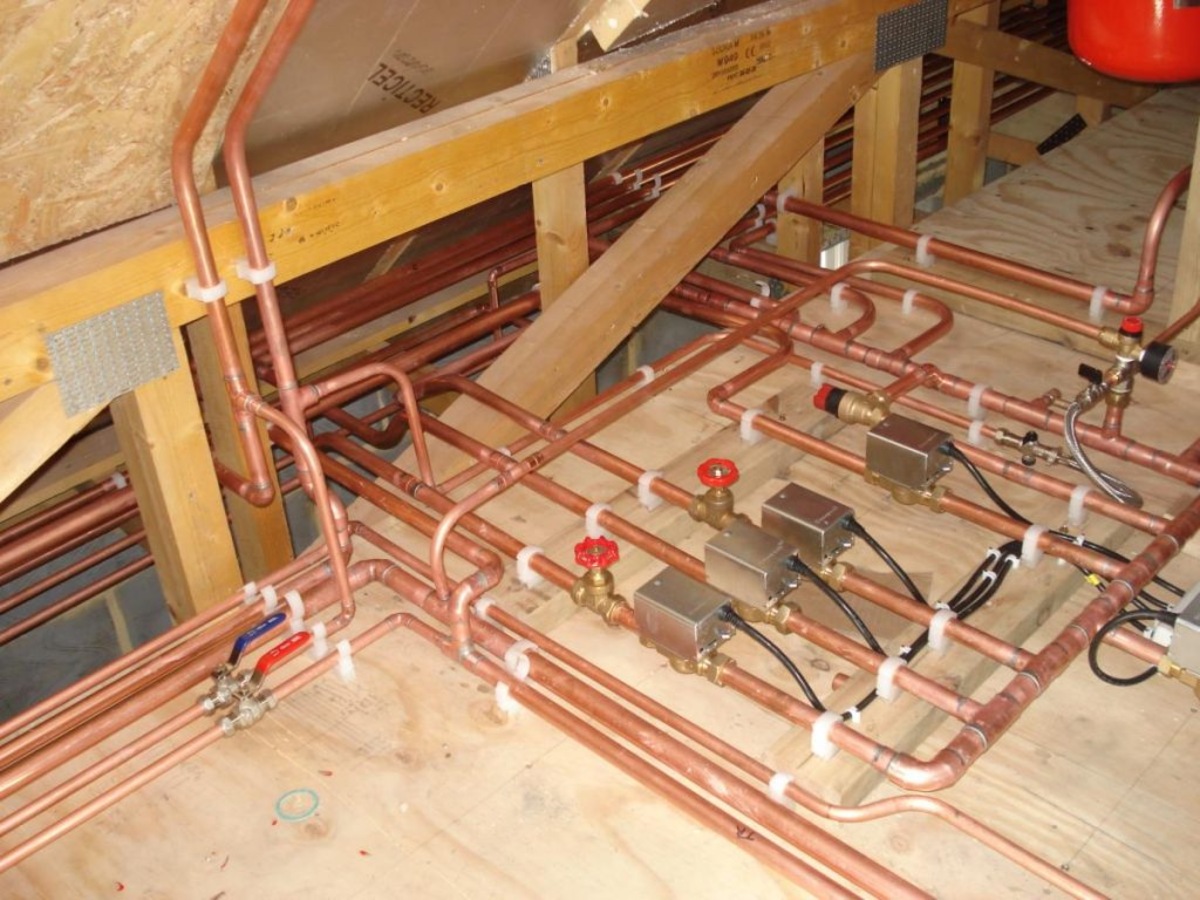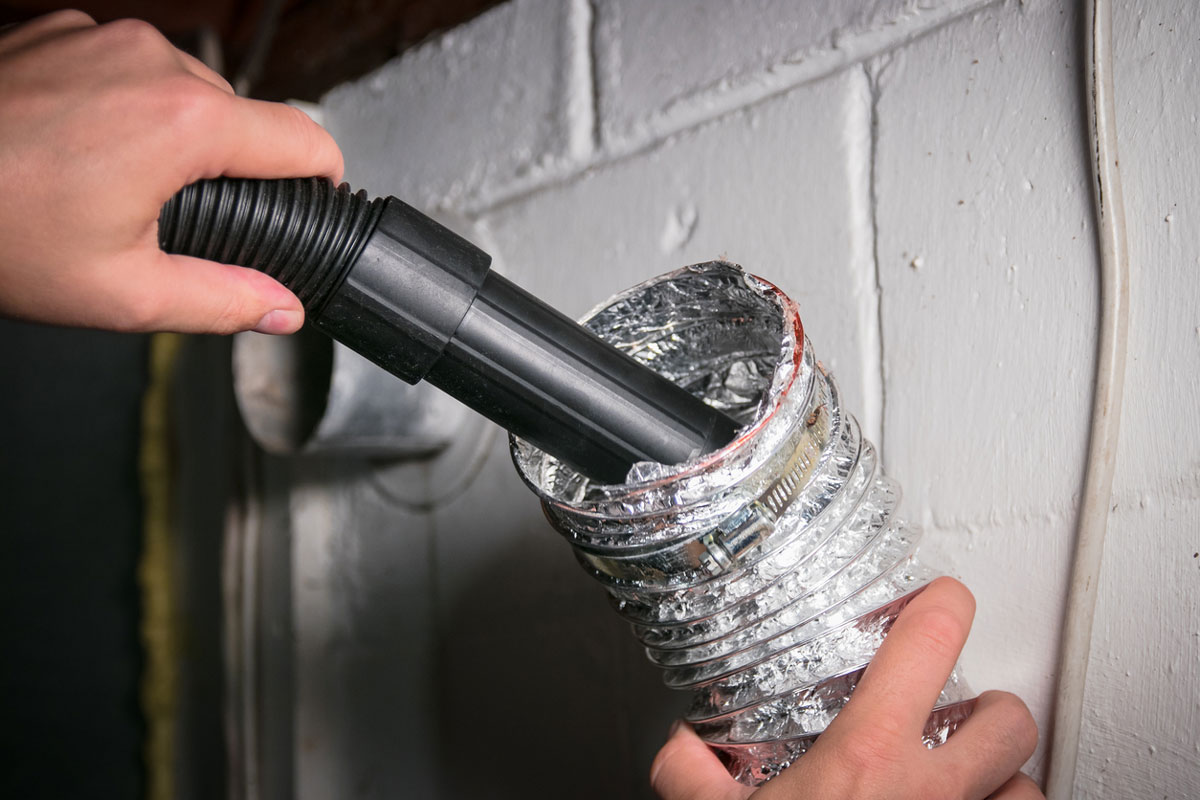Home>Home Appliances>Heating & Cooling>How A Forced Air Heating System Can Cause Stuffiness


Heating & Cooling
How A Forced Air Heating System Can Cause Stuffiness
Modified: August 17, 2024
Learn how a forced air heating system may lead to stuffiness and discover solutions to improve indoor air quality. Find out more about heating and cooling issues.
(Many of the links in this article redirect to a specific reviewed product. Your purchase of these products through affiliate links helps to generate commission for Storables.com, at no extra cost. Learn more)
Introduction
For many homeowners, the comfort of a warm and cozy home during the chilly months is a top priority. This often leads to the installation of forced air heating systems, which are popular for their ability to efficiently distribute warmth throughout a living space. However, while these systems excel at maintaining a comfortable indoor temperature, they can also contribute to an issue that many individuals may not be aware of: stuffiness.
In this article, we will delve into the intricacies of forced air heating systems and explore how they can inadvertently lead to a feeling of stuffiness within a home. Additionally, we will provide valuable insights and practical tips on how to improve air quality and alleviate the discomfort associated with this common issue.
Stay tuned as we uncover the potential causes of stuffiness in homes equipped with forced air heating systems and discover effective strategies to enhance indoor air quality, ensuring a healthier and more enjoyable living environment for you and your loved ones.
Key Takeaways:
- Forced air heating systems can make homes feel stuffy due to recirculated air, uneven temperature, and dryness. Regular filter maintenance, high-quality filters, and professional duct cleaning can improve air quality and reduce stuffiness.
- To improve air quality in homes with forced air heating, homeowners can invest in high-efficiency filters, professional duct cleaning, and whole-house humidifiers. These steps can reduce stuffiness and create a fresher, more comfortable indoor environment.
Read more: How To Improve A Forced Air Heating System ?
Understanding Forced Air Heating Systems
Forced air heating systems are a prevalent choice for home heating due to their efficiency and ability to quickly distribute warmth throughout a living space. These systems operate by heating air within a furnace and then circulating it through a network of ducts using a blower or fan. The heated air is released into individual rooms through vents or registers, effectively raising the indoor temperature to a comfortable level.
One of the key components of a forced air heating system is the furnace, which can be powered by various energy sources such as natural gas, electricity, or oil. When the thermostat detects a drop in temperature, it signals the furnace to ignite and begin the heating process. As the air is heated, it is propelled through the ductwork and into the designated areas of the home, providing consistent warmth throughout.
In addition to their heating capabilities, forced air systems can also be equipped with air conditioning units, allowing for year-round climate control. This versatility makes them a popular choice for homeowners seeking both heating and cooling solutions within a single system.
While forced air heating systems offer efficient and effective heating, they also have certain characteristics that can impact indoor air quality. The continuous circulation of air throughout the home can lead to the accumulation of dust, allergens, and other airborne particles within the ductwork. Furthermore, the rapid movement of air can create drafts and uneven temperature distribution, potentially leading to discomfort and fluctuations in air quality.
Understanding the fundamental operation of forced air heating systems is crucial for homeowners looking to optimize their indoor environment. By gaining insight into how these systems function and their potential impact on air quality, individuals can take proactive measures to address any issues and ensure a healthier and more comfortable living space.
How Forced Air Heating Systems Can Cause Stuffiness
The very nature of forced air heating systems, while effective at maintaining a warm and cozy indoor environment, can inadvertently contribute to a feeling of stuffiness within the home. This sensation of stuffiness often arises from several factors inherent to the operation of these heating systems.
-
Lack of Fresh Air Circulation: Forced air heating systems rely on recirculating the existing air within a home to maintain a consistent temperature. This continuous recirculation can lead to a buildup of airborne particles, including dust, pet dander, and other allergens, which can contribute to a feeling of stuffiness and reduced air quality.
-
Uneven Air Distribution: The rapid movement of air through the ductwork can create uneven temperature distribution within the home, leading to pockets of warm and cool air. This fluctuation in air temperature can result in discomfort and a sense of stuffiness, particularly in areas where the airflow is limited or obstructed.
-
Dry Air: In the process of heating the air, forced air systems can inadvertently reduce the overall humidity levels within a home. Low humidity levels can lead to dry, stagnant air, which may exacerbate the feeling of stuffiness and discomfort, particularly for individuals prone to respiratory issues or dry skin.
-
Airborne Particles: As air is propelled through the ductwork, it can dislodge and redistribute airborne particles that have settled within the system. These particles, including dust, pollen, and mold spores, can be released into the living space, potentially contributing to a sense of stuffiness and diminished air quality.
-
Inadequate Filtration: The effectiveness of a forced air system in maintaining indoor air quality is heavily reliant on the condition of its air filters. Over time, filters can become clogged with debris, reducing their ability to capture airborne particles and leading to compromised air quality and a feeling of stuffiness.
Understanding these potential contributors to stuffiness within homes equipped with forced air heating systems is essential for homeowners seeking to address and alleviate this common issue. By recognizing the factors at play, individuals can implement targeted strategies to improve air quality and create a more comfortable and inviting indoor environment.
To reduce stuffiness caused by a forced air heating system, try using a high-quality air filter to trap dust and allergens, and regularly clean and maintain the system to ensure proper air circulation.
Tips for Improving Air Quality in Forced Air Heating Systems
Improving air quality in homes equipped with forced air heating systems is essential for creating a healthier and more comfortable living environment. By implementing targeted strategies, homeowners can effectively address the potential issues that contribute to stuffiness and diminished air quality. Here are practical tips to enhance air quality and promote a fresher, more inviting indoor atmosphere:
-
Regular Filter Maintenance: One of the most impactful steps in improving air quality is to regularly inspect and replace the air filters within the forced air heating system. Clean filters are essential for capturing airborne particles and preventing them from circulating throughout the home. By adhering to a routine maintenance schedule, homeowners can ensure that their filters remain effective in maintaining clean and fresh indoor air.
-
Invest in High-Quality Filters: Upgrading to high-efficiency air filters can significantly enhance the filtration capabilities of the heating system. High-quality filters are designed to capture a greater percentage of airborne particles, including dust, pollen, and pet dander, thereby improving air quality and reducing the potential for stuffiness within the home.
-
Professional Duct Cleaning: Over time, dust, debris, and other contaminants can accumulate within the ductwork of forced air heating systems, compromising air quality and contributing to a feeling of stuffiness. Engaging professional duct cleaning services can effectively remove built-up particles and ensure that the air circulating throughout the home is clean and free from contaminants.
-
Humidification: Addressing dry air is crucial for improving indoor air quality, especially during the winter months when forced air heating systems can contribute to reduced humidity levels. Installing a whole-house humidifier can help maintain optimal humidity levels, preventing dry, stagnant air and promoting a more comfortable and breathable indoor environment.
-
Air Purification Systems: Consider integrating air purification systems into the forced air heating system to further enhance air quality. These systems are designed to remove a wide range of airborne pollutants, including allergens, bacteria, and odors, resulting in cleaner, fresher air throughout the home.
-
Regular Ventilation: Promoting adequate ventilation within the home is essential for preventing stuffiness and maintaining optimal air quality. Opening windows periodically to allow fresh air to circulate can help mitigate the buildup of indoor pollutants and contribute to a healthier indoor environment.
By implementing these proactive measures, homeowners can effectively improve air quality and alleviate the feeling of stuffiness often associated with forced air heating systems. These strategies not only promote a healthier living environment but also contribute to a more enjoyable and comfortable home atmosphere for residents and guests alike.
Conclusion
In conclusion, while forced air heating systems excel at providing efficient and consistent warmth within homes, they can inadvertently contribute to a feeling of stuffiness and diminished air quality. The continuous recirculation of air, uneven temperature distribution, and reduced humidity levels are among the factors that can lead to discomfort and a sense of stuffiness within the indoor environment.
However, by understanding the potential causes of stuffiness and implementing targeted strategies, homeowners can effectively improve air quality and create a healthier, more inviting living space. Regular maintenance of air filters, investing in high-quality filtration systems, and engaging professional duct cleaning services are essential steps in mitigating the impact of airborne particles and contaminants within the forced air heating system.
Furthermore, addressing dry air through the installation of whole-house humidifiers and integrating air purification systems can significantly enhance indoor air quality, reducing the likelihood of stuffiness and promoting a fresher, more breathable atmosphere. Additionally, promoting regular ventilation and allowing fresh air to circulate within the home can further contribute to a healthier indoor environment.
By taking proactive measures to address the potential issues associated with forced air heating systems, homeowners can create a more comfortable and enjoyable living space for themselves and their families. These efforts not only improve air quality but also contribute to a sense of well-being and contentment within the home.
Ultimately, by recognizing the impact of forced air heating systems on indoor air quality and implementing practical solutions, homeowners can alleviate the feeling of stuffiness and create a healthier, more inviting living environment. With a focus on proactive maintenance, targeted improvements, and a commitment to promoting optimal air quality, homeowners can enjoy the warmth and comfort of their forced air heating systems without compromising on the freshness and purity of the indoor air.
Frequently Asked Questions about How A Forced Air Heating System Can Cause Stuffiness
Was this page helpful?
At Storables.com, we guarantee accurate and reliable information. Our content, validated by Expert Board Contributors, is crafted following stringent Editorial Policies. We're committed to providing you with well-researched, expert-backed insights for all your informational needs.
















0 thoughts on “How A Forced Air Heating System Can Cause Stuffiness”